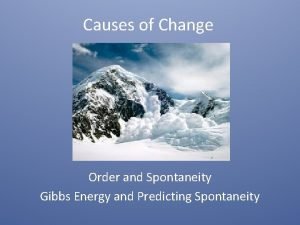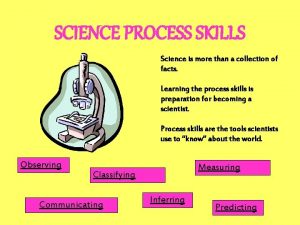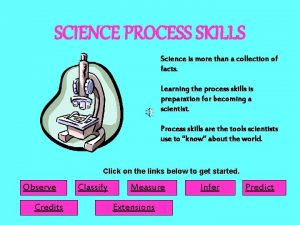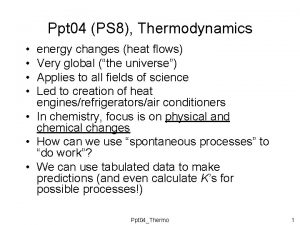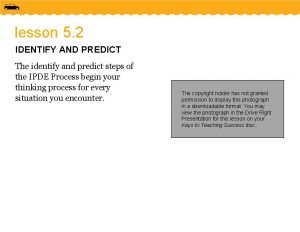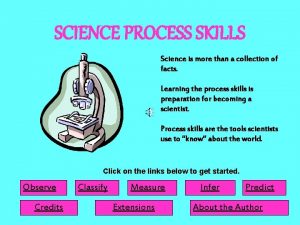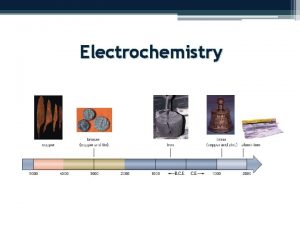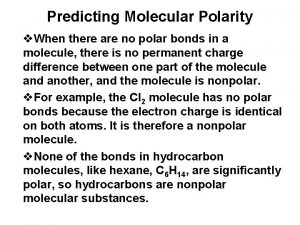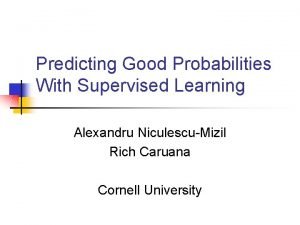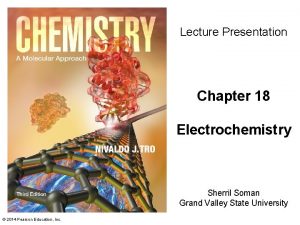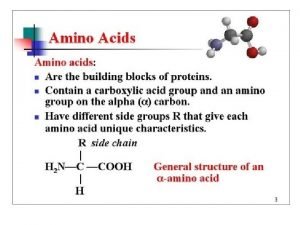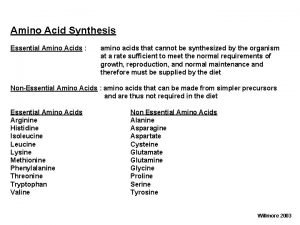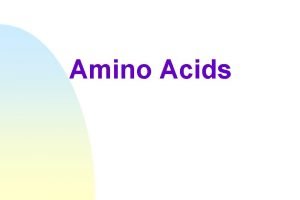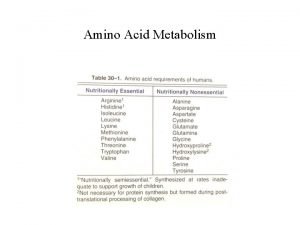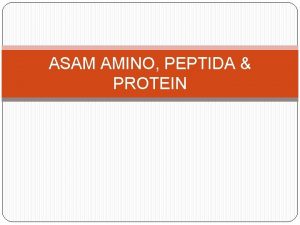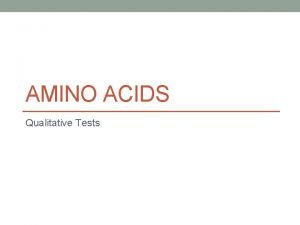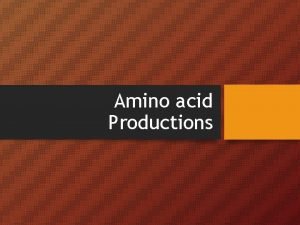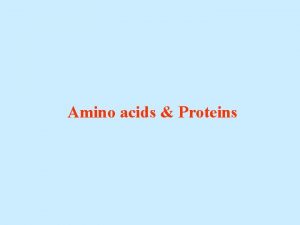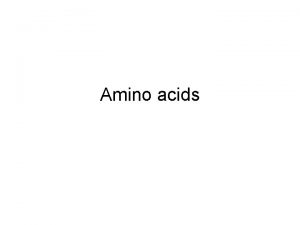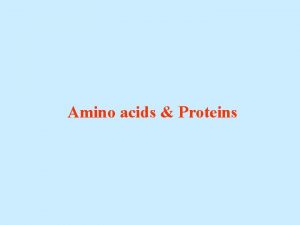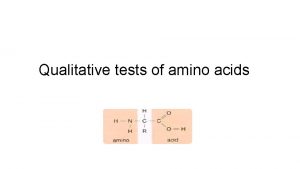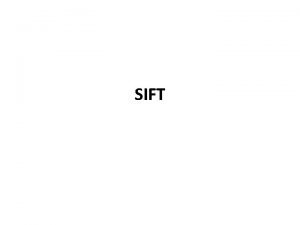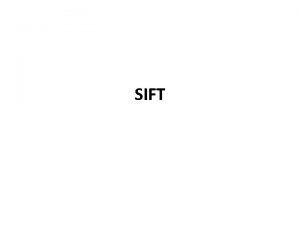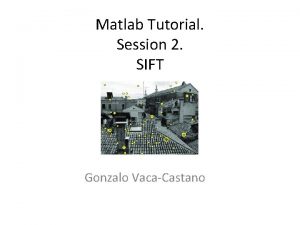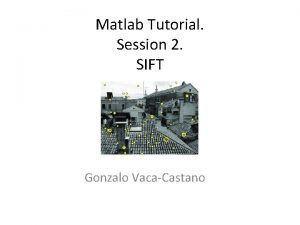New SNPs Sift Polyphen etc SIFT predicting amino



![Gene-Gene Interactions "Model. . . erythrocytes of [glutathione peroxidase] GPX 1*2 heterozygotes should be Gene-Gene Interactions "Model. . . erythrocytes of [glutathione peroxidase] GPX 1*2 heterozygotes should be](https://slidetodoc.com/presentation_image_h2/acf1222f00d963ce467c202e2caf63ee/image-4.jpg)
















- Slides: 20

New SNPs: Sift, Polyphen, etc. SIFT: predicting amino acid changes that affect protein function Pauline C. Ng and Steven Henikoff, Nucleic Acids Research, 2003, Vol. 3 1, No. 13 3812 -3814

“Identification of BRCA 1 missense substitutions that confer partial functional activity: potential moderate risk variants? ” Lovelock, et al. 2007

From SNPs to form &function: 100% sequence identity, but different fold & function
![GeneGene Interactions Model erythrocytes of glutathione peroxidase GPX 12 heterozygotes should be Gene-Gene Interactions "Model. . . erythrocytes of [glutathione peroxidase] GPX 1*2 heterozygotes should be](https://slidetodoc.com/presentation_image_h2/acf1222f00d963ce467c202e2caf63ee/image-4.jpg)
Gene-Gene Interactions "Model. . . erythrocytes of [glutathione peroxidase] GPX 1*2 heterozygotes should be more efficient in sheltering the cell membrane from irreversible oxidation and binding of hemoglobin caused by the oxidant stress exerted by Plasmodium falciparum. . . we observed a clear trend toward a dissociation between the HBB*A/*S and GPX 1*2/*1 genotypes in the overall data. " Destro-Bisol et al. Hum Biol 1999; 71: 315 -32. (Pub) 4

G 6 PD. . (food/drug induced hemolytic anemia) Malaria & Hb. S Thalassemia

G 6 PD

Human Red Blood Cell ODE model ADP ATP NADH NAD ADP ATP 1, 3 DPG 3 PG GA 3 P 2, 3 DPG FDP 2 PG DHAP PEP F 6 P ADP ATP R 5 P GA 3 P F 6 P PYR G 6 P GLCe ADP ATP GO 6 P GLCi ATP ADP 2 GSH GSSG X 5 P S 7 P ADO F 6 P AMP ADE IMP ATP HYPX LACe Cl- HCO 3 - PRPP AMP PRPP e LACi p. H ADP INO ADOe GA 3 P E 4 P NADPH NADP ATP ODE model INO NADH NAD RU 5 P NADPH ADP + K Na+ GL 6 P ATP R 1 P R 5 P ADEe Jamshidi et al. 2000 (Pub) 7

Modeling SNP to 3 D to cell morphology & pathology Average Hb. Sb. E 6 V Hbb. E 6 W Sickle cell Harrington et al. Crystal structure of deoxy-human hemoglobin b 6 Glu --> Trp. Implications for the structure and formation of the sickle cell fiber. J Biol Chem. 1998, 273: 32690 -6. (Pub) 8 Pro 3

Red Blood Cell Function • Transport O 2 from lungs to tissues – using hemoglobin to carry the O 2 • Hemoglobin is maintained in its functional state (reduced) by the metabolic machinery • Cell membrane separates the internal environment from the external environment – subject to physicochemical constraints • Electroneutrality, Osmotic balance – Cause of the imbalance: • impermeable polyions inside the cell – hemoglobin, organic phosphates 9

3 D-structure to function to morphology to function Normal RBC 6 -8 µm; 4 e 12 per L Sickle cell; Hb. S Dacrocytes; pernicious anemia Acanthocytes; abetalipoproteinemia Echinocytes (crenated); hyperosmotic medium Macrocytes 9 -12µm; megaloblastic anemia Spherocytes; 10 www. wadsworth. org/chemheme/cytocritique enzyme deficiencies

Ab Initio Structure Prediction: CASP 4 (2 pt for largely correct prediction, 1 point for a somewhat) http: //depts. washington. edu/bakerpg/ 11

Where do 3 D structures come from? Research Collaboratory for Structural Bioinformatics Protein Data Bank (RCSB PDB) HEADER COMPLEX (TRANSCRIPTION REGULATION/DNA) 23 -NOV-93 1 HCQ COMPND 2 MOLECULE: HUMAN/CHICKEN ESTROGEN RECEPTOR; REMARK 2 RESOLUTION. 2. 4 ANGSTROMS REMARK 3 PROGRAM 1 X-PLOR REMARK 3 R VALUE 0. 204 SEQRES 1 A 84 MET LYS GLU THR ARG TYR CYS ALA VAL CYS ASN ASP TYR SEQRES 1 C 18 C C A G G T C A G T G FORMUL 9 ZN 8(ZN 1 2+) FORMUL 10 HOH *158(H 2 O 1) HELIX 1 1 GLU A 25 ILE A 35 1 ATOM 1 N MET A 1 50. 465 24. 781 79. 460 1. 00 60. 88 ATOM 2 CA MET A 1 50. 332 26. 116 80. 055 1. 00 61. 13 CONECT 2983 2747 2789 MASTER 22 3 8 9 8 0 0 6 3864 8 34 36 END 1 HCQ 2 1 HCQ 4 1 HCQ 39 1 HCQ 42 1 HCQ 46 1 HCQ 60 1 HCQ 74 1 HCQ 107 1 HCQ 108 1 HCQ 109 1 HCQ 133 1 HCQ 134 1 HCQ 4038 1 HCQ 4039 1 HCQ 4040 12

NMR distance-constrained ensembles Crystallographic phases & electron density Ca trace Ref 1, 2 13

Crystallographic refinement Fourier transform relates scattered X-rays, F, to electron density, r. Dk is the scattering vector. Minimize Fo-Fc. Linearize with a first order Taylor expansion; parameters p (e. g. = x, y, z) (ref) 14

Crystallography & NMR System(CNS) X-plor Heavy atom searching, experimental phasing (MAD & MIR), density modification, crystallographic refinement with maximum likelihood targets. NMR structure calculation using NOEs, J-coupling, chemical shift, & dipolar coupling data. http: //cns. csb. yale. edu/v 1. 0/ 15

Measure Structure Quality R factor = S ||Fo|-|Fc|| / S |Fo| < 0. 25 good > 0. 4 crude Correlation Coefficient > 0. 7 RMSD (root mean square deviation) = sqrt[S (Xi 1 - Xi 2)2 ] compare models 1 & 2 i = 1 to n (#atoms) canonical peptide geometry 16

20 Amino acids of 280 N CO R 19 L-amino acids: H toward you; CO R N clockwise. T www. people. virginia. edu/~rjh 9 u/aminacid. html 17 www-nbrf. georgetown. edu/pirwww/search/textresid. html

Favored peptide conformations 3(10)helix fig 18

Molecular mechanics F = ma -d. E/dri = Fi = mi d 2 ri/dt 2 r = position (radius) dt ~= 1 fs (1 e-15 sec) update velocity & r vi(t+dt/2) = vi(t-dt/2) + ai(t) dt ri(t+dt) = ri(t)= v(t+dt/2)dt E = Eb + Eq + Ew + Evdw + Eelectrostatic Eb = 0. 5 kb(r-r 0)2 Eq = 0. 5 kq(q - q 0)2 Ew = kw [ 1 + cos( n w - l)] Evdw = A(r/rv 0)-12 -B(r/rv 0)-6 Eelectrostatic = qi qj / e r b q (Ref) w 19

 Predicting single replacement reactions
Predicting single replacement reactions Complete the following table on reaction spontaneity.
Complete the following table on reaction spontaneity. Science process skills communicating
Science process skills communicating Braden score meaning
Braden score meaning Predicting science process skills
Predicting science process skills Prediction pip
Prediction pip Predicting single replacement reactions
Predicting single replacement reactions Predicting nba games using neural networks
Predicting nba games using neural networks Synthesis reaction predicting products
Synthesis reaction predicting products Predicting content in listening
Predicting content in listening Predicting spontaneity
Predicting spontaneity What is the orderly visual search pattern
What is the orderly visual search pattern Makalah previewing and predicting
Makalah previewing and predicting Science process skills predicting
Science process skills predicting Predicting pip
Predicting pip Predicting redox reactions
Predicting redox reactions Predicting molecular polarity
Predicting molecular polarity The evolution of crm is reporting analyzing and predicting
The evolution of crm is reporting analyzing and predicting Alexandru niculescu-mizil
Alexandru niculescu-mizil Pleasure predicting sheet
Pleasure predicting sheet Predicting spontaneity
Predicting spontaneity

